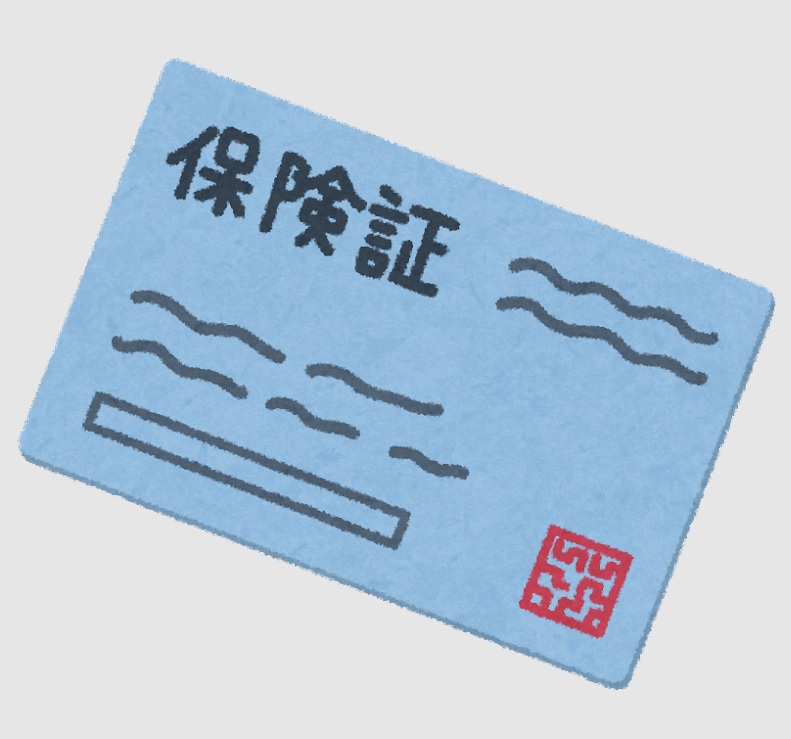「先進医療|医療保険なんて要らない?健康と財政は自己負担で。」
~前回のつづき~
●未来の医療に備えるはずが、今の無駄に~先進医療特約だけでは入れない、その矛盾~

先進医療の取り扱いについて
お話します。
先進医療特約が必要だから
医療保険に入るという人もいます。
『先進医療』とは
厚生労働省が認めた
高度な医療技術のことで
高度な医療機関で研究機関で研究され
安全性と効果は高いとされているが
保険診療の対象とするか検討中とのこと。
先進医療を受けると
全額自己負担となります。

健康保険の適用外です。
先進医療特約そのものは
大体月額数百円で
先進医療を受けると
安いもの高いもの色々有るんですが
みんなが心配する
ガンの治療であれば
数百万円掛かる。
数百円払って
特約を付けておくだけで
数百万円分の保証を受けられる。
掛け捨てで加入していれば
確かに意味が無くはないです。
ただし特約なので

単体では入れません。
要はオプションです。
余計なお金を支払う必要があります。
特約を付ける為に
医療保険に入らなければならないのは
トータルで考えるとどうなんでしょう?
●先進医療=高額? そのイメージ、ちょっとズレてます~数字を見れば見えてくる~

先進医療は全て高額なんでしょうか?
いやいや、そうではありません。
少し前のデータですが
平成28年度先進医療実績報告によると
| 1位 | 多焦点眼内レンズを用いた水晶体再建術 (年間実施件数 11478件) |
55万円 |
| 2位 | 前眼部三次元画像解析 (年間実施件数 6739件) |
4000円 |
| 3位 | 陽子線治療 (年間実施件数 2016件) |
280万円 |
| 4位 | 重粒子線治療 (年間実施件数 1787件) |
310万円 |
| 5位 | 歯周外科治療における バイオ・リジェネレーション法 (年間実施件数 277件) |
6万円 |
| 6位 | EBウィルス感染症迅速診断 (年間実施件数 234件) |
1万5000円 |
| 7位 | 高周波切除器を用いた子宮腺筋症核手術 (年間実施件数 145件) |
30万円 |
実績件数1位
つまり全国で一番採用された先進医療は
『多焦点眼内レンズを用いた水晶体再建術』
これで55万円です。
その他の項目を見ても
そんなに高くないです。
中には
数百万円掛かってるものも有りますが
全部が全部高額ではありません。
4,000円のものもあれば
310万円のものもある。
全部が全部高額ではない。
それから

先進医療の実施件数は
多くはないんです。
実施件数3位の
陽子線治療というのは
ガンに使うものですね。
ガン治療中の患者が
150万人いるのに対して
これを受けているのが
年間2,000件です。
2,000件だと多いように聞こえますが
ガン治療中の150万人に対して2,000件
つまり

受ける可能性は
ほとんどありません。
これが
・いいのか
・悪いのか
という話ではなく
あくまでも数字の話です。
費用・件数は表の通りです。
高額でメジャーな治療は近い将来
保険診療になる可能性があります。
ここを踏まえて
自己の責任において判断してください。
●まとめ
◆貯蓄性のある保険は完全に不要
→保険ではなく実質投資信託
◆掛け捨ての医療保険であれば貯金でOK
→健康的な生活を送り100〜200万円早く貯めよう
◆保険に入るからお金が貯まらない
→お金が貯まってないから保険に入るというループを止めて
最低限の貯金を作ると余分な保険に入らなくて済む
◆最後は個人の自由
=加入するしないは自己判断
何故保険に入るのかを良く考える
Special Thanks college president Ryo.

●おまけ
≪≪perplexityちゃんによる文章まとめ≫≫
先進医療特約は、厚生労働省が認めた高度な医療技術を受ける際の全額自己負担に備えるための保険オプションです。
しかし、特約だけでは加入できず、医療保険本体への加入が必要なため、無駄な保険料負担になることもあります。
実際、先進医療の費用は数千円から数百万円まで幅広く、すべてが高額というわけではありません。
例えば、最も多く実施されている「多焦点眼内レンズを用いた水晶体再建術」は約55万円ですが、数千円の治療も存在します。
さらに、先進医療を実際に受ける人は少数で、高額な治療も将来的には保険診療となる可能性があります。
保険に頼るより、健康的な生活と貯金で備える方が現実的であり、加入は自己判断が重要です
[1] https://www.jili.or.jp/lifeplan/lifesecurity/1204.html
[2] https://www.taiyo-seimei.co.jp/net_lineup/colum/cancer/010.html
[3] https://www.msa-life.co.jp/senshin_navi/kiso/index2.html
[4] https://www.mhlw.go.jp/topics/bukyoku/isei/sensiniryo/kikan03.html
[5] https://www.sona-mira.co.jp/articles/630-y-zk-ranking-advanced-medical-treatments
[6] https://hoken-teacher.jp/archives/6529
[7] https://www.senshin-daido-life.jp/about/price.html
[8] https://www.fwdlife.co.jp/blog/protection/what-is-advanced-medical-insurance-benefits-and-examples-of-expenses/
[9] https://www.sbisonpo.co.jp/gan/column/column21.html
≪≪Chat-GPTくんによる英訳≫≫
~Continuation from the previous post~
【Preparing for the future of medicine, but wasting money now– The contradiction: You can’t get advanced medical coverage alone –】
Let’s talk about advanced medical treatments and how they are handled in insurance.
Some people take out medical insurance solely to add the Advanced Medical Rider.
“Advanced medical care” refers to high-level medical technologies officially approved by Japan’s Ministry of Health, Labour and Welfare.
They are being studied at specialized institutions and are considered effective and safe, but are still under review to determine whether they should be covered by public health insurance.
Until then, these treatments are 100% self-paid — not covered by national health insurance.
The Advanced Medical Rider itself costs only a few hundred yen per month.
If you receive an advanced treatment, the costs can vary — some are cheap, some are very expensive.
For example, cancer treatment — a major concern for many — can cost several million yen.
By paying just a few hundred yen a month, you can secure coverage for hundreds of thousands to millions of yen in expenses.
In that sense, having the rider can be meaningful.
However, it’s just a rider — you can’t purchase it on its own.
It’s an add-on option, which means you need to buy a full medical insurance plan to get it.
This leads to paying extra premiums just to access this one benefit.
So it’s worth asking:
Is it really worth buying a whole medical policy just to get this rider?
—
【Advanced medical care = Expensive?-That perception is a bit off — the numbers tell a different story】
Is all advanced medical care expensive?
Actually, no.
According to a report from 2016 (Heisei 28):
| Rank | Treatment | Annual Cases | Cost |
| 1 | Intraocular lens surgery (multifocal) | 11,478 | ¥550,000 |
| 2 | 3D anterior eye analysis | 6,739 | ¥4,000 |
| 3 | Proton therapy (for cancer) | 2,016 | ¥2,800,000 |
| 4 | Heavy ion therapy | 1,787 | ¥3,100,000 |
| 5 | Bio-regeneration for periodontal surgery | 277 | ¥60,000 |
| 6 | EBV rapid diagnostic test | 234 | ¥15,000 |
| 7 | Uterine adenomyosis surgery (RF ablation) | 145 | ¥300,000 |
The most commonly performed advanced treatment in Japan is multifocal intraocular lens surgery at about ¥550,000.
Looking at the rest of the list, many procedures are not excessively expensive.
Yes, some treatments cost a few million yen, but not all do.
Some are as low as ¥4,000, while others reach ¥3.1 million.
So no — not all advanced medical care is high-cost.
—
【How likely are you to actually use it?-Take proton therapy, for example — used to treat cancer.】
There are around 1.5 million cancer patients in Japan.
Yet only about 2,000 people receive proton therapy per year.
While 2,000 sounds like a big number, compared to 1.5 million patients, it’s just 0.13%.
In other words:
You’re highly unlikely to ever need it.
This isn’t about good or bad — it’s simply what the numbers tell us.
Treatments that are both expensive and commonly used may soon become eligible for national health coverage.
—
【Final Thoughts】
✅ Savings-type insurance is unnecessary
→ It’s not really insurance — it’s more like an investment product.
✅ If you want medical coverage, self-insurance (savings) is fine
→ Live healthy and save ¥1–2 million quickly.
✅ People can’t save money because they’re buying too much insurance
→ And they buy insurance because they don’t have savings — it’s a cycle.
Break the loop by building a basic savings reserve, and you won’t need extra insurance.
✅ In the end, it’s a personal decision
→ Just make sure you know why you’re buying insurance — and whether it’s worth it.
Special Thanks OpenAI and Perplexity AI, Inc







